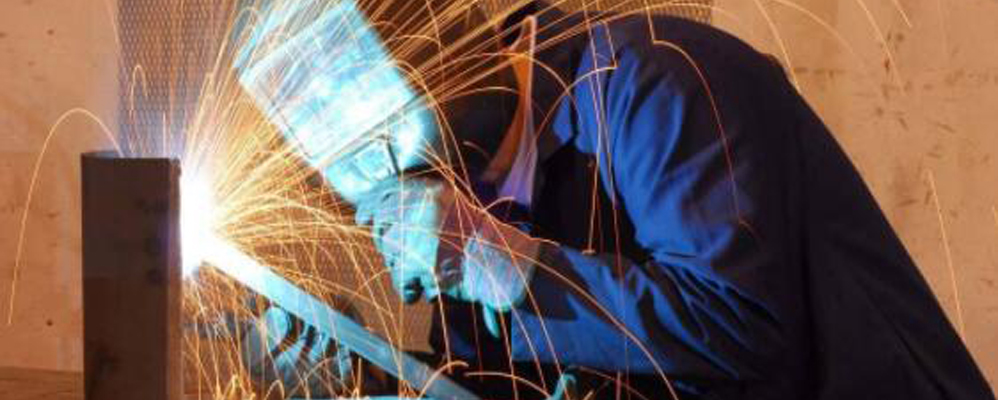Solution To The Welding Spatter Problem Of CO2 Gas Shielded Welding Wire
As a kind of high-efficiency welding material, CO2 gas shielded welding wire has high welding efficiency, fast welding speed, strong rust resistance, small welding deformation, small cold cracking tendency, good visibility of molten pool, suitable for all-position welding and low cost. The advantages of operation, etc., are widely used in petroleum, chemical, electric power, hydraulic power, bridges, ship superstructures, thin-wall structure welding and other fields. However, the large metal splash generated during welding is a major disadvantage of CO2 gas shielded welding. Metal splash not only reduces the welding efficiency, but also increases the welding cost. Moreover, the splash metal easily blocks the wire feeding tube and the electric contact nozzle, resulting in poor wire feeding, unstable arc burning, deterioration of working conditions, and serious termination of welding and cleaning of the nozzle. In order to solve these problems, the domestic anti-wear wire authoritative unit, Beijing Guben Technology Co., Ltd. proposed a number of measures to control splashing.
1. Causes of welding splash of CO2 gas shielded welding wire
Welding spatter is a disadvantage of CO2 gas shielded welding wire. Especially when using fine particle transition and short circuit transition form, the welding process will produce a large amount of metal splash, reduce the deposition rate, increase the post-weld cleaning workload, and affect the welding efficiency. At the same time, the generation of splash reduces the stability of the arc, which seriously affects the quality of the weld and the performance of the weld.
Reason one: CO2 gas shielded welding wire raw material
When the carbon mass fraction of the CO2 gas shielded welding wire exceeds 0.08%, the metal splash particles are obviously increased, which is liable to cause poor wire feeding and blockage of the conductive nozzle, which brings great inconvenience to the use.
Reason two: process control
The control process of the welding wire production process is not strict, and the surface of the welding wire has more oil and impurities, and the combustion produces splashing during welding.
Reason three: welding process parameters
Welding current and arc voltage are the key factors in the welding parameters. The welding current mainly depends on the wire feeding speed. The faster the wire feeding speed, the larger the welding current. The welding current has the greatest effect on weld penetration and splash. Under a certain wire diameter and welding current, if the arc voltage is high, the melting speed of the wire increases, the arc length increases, the droplets can not normally transition and the large particles fly out, and the splash increases; if the arc voltage is low, the arc leads Difficult to burn, the melting speed of the wire is reduced, the length of the arc is shortened, and the welding wire is plunged into the molten pool, which also causes large metal splash and poor weld formation.

2. CO2 gas shielded welding wire welding splash prevention measures
Precautionary measure 1: Strict control of chemical composition
Strictly control the components of the welding wire raw materials, especially C, Mn, Si, S, P and so on. The CO2 gas shielded welding wire must contain enough Si, Mn, and even deoxidizers such as Ti, Zr, and Al. The addition of Ti makes the droplets refine, the arc is stabilized, the splash is reduced, and the welding process performance is improved.
Preventive measures 2: Strengthen welding wire production process control
The lubricant and mold replacement system should be strictly implemented in the production. The mold is replaced once in 6h, the lubricant is completely replaced once in 12h, and the cotton yarn is wrapped at the copper-plated wire and the layer winding process to remove impurities and oil on the surface of the wire to reduce welding. Splashes and smog caused by the burning of impurities.
Preventive measures 3: Optimize welding process parameters
When using Beijing Guben CO2 gas shielded welding wire as surfacing material, the welding parameters are as follows:
Wire diameter 1.2mm, welding current 160-220A, welding voltage 22-25V; wire diameter 1.6mm, welding current 220-280A, welding voltage 22-28V; wire extension length 15-20mm, welding speed 35cm/min, welding gun inclination 80 degrees, the current type is DC reverse connection.
Precautionary measure 4: Add active elements to the surface of the wire
Coating a certain active agent to make it an active welding wire, changing the performance of the arc, increasing the penetration depth, reducing the splashing particles, and finally achieving efficient welding, improving welding efficiency and saving energy.
Preventive measure 5: protective gas using mixed gas
The addition of argon to CO2 changes the physical and chemical properties of pure CO2. The addition of 20% (volume fraction) of argon g
as easily forms a spray transition during welding, and the metal splash is reduced and the weld bead is beautifully formed during welding. Although the welding cost is increased, the cleaning time and material loss are saved, and the low temperature toughness of the weld metal is improved.
CO2 gas shielded welding is inevitable due to process facilities and materials. However, as long as the quality of the raw materials, especially the carbon content, is ensured, the appropriate welding process parameters, the addition of active agents on the surface, and the use of mixed gases can effectively reduce the welding time. The resulting metal splash improves weld quality and weld efficiency.
Contact Us
Please feel free to let us know your demand information, we will contact you as soon as possible, looking forward to cooperate with you!





